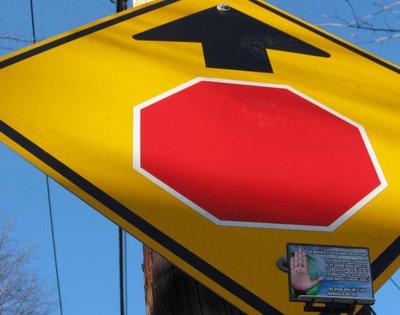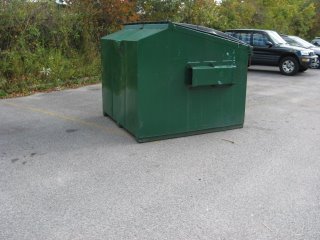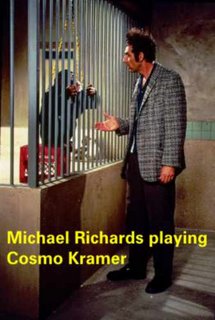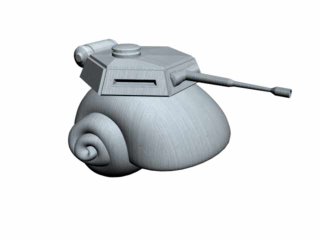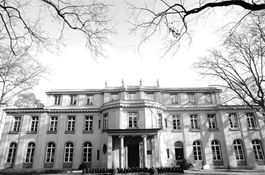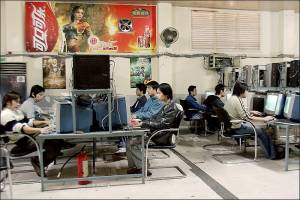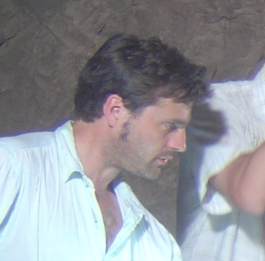Who would think the wall next to your table at a cozy dinner could send you catapulting across oceans and centuries?
A friend recently began managing a new restaurant. Stopped by for a visit, unaware that the “DeWolf Tavern” had just been tagged by Esquire as “one of the 20 best new restaurants in America.” Indeed the place was awash in buzz. I will spare you stories of seared Tuna etc, but I got the guided tour, with some less visible curiosities pointed out.
Stoned
 The building is a very, very old warehouse right on the water, and built of stone which connotes stability and permanence. I’ve spent much of my adult life trekking around the world looking at the remains of ancient cultures- which usually means you’re looking at stone. Quite a lot can happen in the eons that stone sits around, so stone begins to function as a record of events over that time and isn’t as stable as our brief lives would lead us to presume. During the ’38 hurricane a huge ferry was thrown up against the building and it stove in a section of the wall. Walking downhill toward the water, before even knowing where the restaurant was, I saw this section of wall. In the darkness, an orange floodlight was glinting off the gutter of the building far ahead. Our angle of approach was such that we looked along the length of the wall and from this fore-shortened view, the wall curves crazily inward nearly three feet at the second story roofline over a length of about 20 feet. It’s very easy to imagine the side of a ship nestled into that arc. The wall is also about two feet thick, so that’s a lot of displaced stone. One is left to wonder about the repair strategy after the ferry was hauled away- it took a hurricane after all to make the dent, how are you ever going to push the wall straight again? It’s as likely to collapse as it is to straighten. Someone must have shrugged and figured they might as well smoosh cement into all the fresh cracks and carry on with the wall as-is; it’s just a warehouse. There is a very big difference in how this wall “feels” compared to a straight wall. It’s organic and disconcerting, it has a radically different energy than the intentionally curving walls of Gehry fame. One can never get past the knowledge that it was originally straight and is “supposed” to be straight. There’s a tension in one’s persistent awareness of its motion out of alignment- all that energy is still trapped there; the wall has become a verb.
The building is a very, very old warehouse right on the water, and built of stone which connotes stability and permanence. I’ve spent much of my adult life trekking around the world looking at the remains of ancient cultures- which usually means you’re looking at stone. Quite a lot can happen in the eons that stone sits around, so stone begins to function as a record of events over that time and isn’t as stable as our brief lives would lead us to presume. During the ’38 hurricane a huge ferry was thrown up against the building and it stove in a section of the wall. Walking downhill toward the water, before even knowing where the restaurant was, I saw this section of wall. In the darkness, an orange floodlight was glinting off the gutter of the building far ahead. Our angle of approach was such that we looked along the length of the wall and from this fore-shortened view, the wall curves crazily inward nearly three feet at the second story roofline over a length of about 20 feet. It’s very easy to imagine the side of a ship nestled into that arc. The wall is also about two feet thick, so that’s a lot of displaced stone. One is left to wonder about the repair strategy after the ferry was hauled away- it took a hurricane after all to make the dent, how are you ever going to push the wall straight again? It’s as likely to collapse as it is to straighten. Someone must have shrugged and figured they might as well smoosh cement into all the fresh cracks and carry on with the wall as-is; it’s just a warehouse. There is a very big difference in how this wall “feels” compared to a straight wall. It’s organic and disconcerting, it has a radically different energy than the intentionally curving walls of Gehry fame. One can never get past the knowledge that it was originally straight and is “supposed” to be straight. There’s a tension in one’s persistent awareness of its motion out of alignment- all that energy is still trapped there; the wall has become a verb.
Plastered
 Extensive renovations were needed to turn the warehouse into a restaurant. When the place was gutted, an earlier interior wall on top of the stone was revealed underneath more recent ones. It’s obviously quite old; made of plaster over hand-split, irregular lath. Most interesting- several spots had 19th century graffiti; numerous names, both of individuals and ships as well as dates. There are also several caricatures of faces. Finally there’s the curvilinear drawing of a woman’s stocking-clad legs. Contemporary graffiti tends to be produced by artists who are tremendously skilled in their medium and produce very elaborate images and texts, the ancient practice of just writing one’s name on a wall doesn’t necessarily stir images of artistic skill. But these scrawled names all actually show beautiful calligraphic penmanship. Fortunately the architects appreciated these images and preserved large sections of the old, filthy wall by cutting them out, mounting them behind glass and reinstalling them on the second floor upscale dining room.
Extensive renovations were needed to turn the warehouse into a restaurant. When the place was gutted, an earlier interior wall on top of the stone was revealed underneath more recent ones. It’s obviously quite old; made of plaster over hand-split, irregular lath. Most interesting- several spots had 19th century graffiti; numerous names, both of individuals and ships as well as dates. There are also several caricatures of faces. Finally there’s the curvilinear drawing of a woman’s stocking-clad legs. Contemporary graffiti tends to be produced by artists who are tremendously skilled in their medium and produce very elaborate images and texts, the ancient practice of just writing one’s name on a wall doesn’t necessarily stir images of artistic skill. But these scrawled names all actually show beautiful calligraphic penmanship. Fortunately the architects appreciated these images and preserved large sections of the old, filthy wall by cutting them out, mounting them behind glass and reinstalling them on the second floor upscale dining room.
As interesting as the graffiti and its penmanship is; I’m intrigued by a less obvious, broader theme. There’s an inversion of perceived value as the interior shifts from stone to plaster and back again. When the structure was built, a readily available, free material was used: stone. No wood to cut and mill, no nails to forge. For a commercial enterprise, the stone is fine because no one cared what the structure looked like. However, at some point the building’s use changed and a more “normal” interior was desired; flat, smooth, white walls and ceilings, which must have taken considerable labor and expense as the wood was cut, fitted and plastered. The idea here is that making the interior “nice” involved visually maximizing its distance from the crude, roughly constructed stone of the exterior. Course stone is easy to build while smooth walls are more difficult to achieve and are thus the more valuable form. Turn the clock forward two hundred years and any hack carpenter can pound together some two-by-fours and slap on sheetrock to give you a flat wall. Meanwhile a huge wall of stone would be enormously expensive to construct, because now you must buy the stone, use lots of labor and heavy machinery to move it around and have skilled workers lay each piece. So when the restaurant seeks to create a rarefied atmosphere, they naturally seek the element that is more difficult to achieve- which today is the rough haphazard stone vs clean, smooth plaster.
Equaled
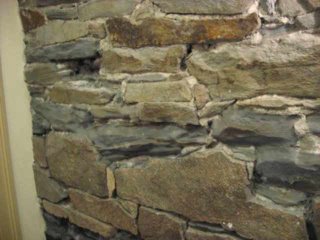 There’s one more invisible feature of the stone walls. The DeWolf tavern is named for the original owners, the DeWolf family, who ran the largest slave trading enterprise in Rhode Island. Most people are generally familiar with the infamous triangle trade, where Africans were brought to the Caribbean to work on sugar plantations, molasses from Caribbean sugar cane was then brought to Newport Rhode Island to make rum which was then brought to Africa to trade for slaves. However, this picture of global exchange turns out to be a bit simplistic and buries some agendas. I live in Newport, Rhode Island and until a few weeks ago, only had a superficial knowledge of the details of Rhode Island’s involvement in the trade. Newport’s large Quaker population was seminal in early abolitionist efforts, as one might imagine; this angle of history is frequently played up. Now why would abolitionism be such an issue if Rhode Island was simply a participant in the sugar cane and rum angle of the trade? Within the triangle model, no slaves even touch Rhode Island shores right? This is where the colloquial understanding of the triangle trade tries to bury the fact that fully ten percent of Rhode Island’s population was made up of slaves. Huge numbers of slaving expeditions to Africa that originated in Newport and Bristol returned directly to Rhode Island without ever going to the Caribbean. Slaves were sold in Newport’s quaint Brick Market. The success of Quaker led anti-slave-trade efforts abolished the legal trade in 1807. The DeWolf family of Bristol used their congressional influence to have Bristol declared a separate customs zone and had a slave ship captain installed as customs inspector to insure the trade’s illegal continuation in Bristol.
There’s one more invisible feature of the stone walls. The DeWolf tavern is named for the original owners, the DeWolf family, who ran the largest slave trading enterprise in Rhode Island. Most people are generally familiar with the infamous triangle trade, where Africans were brought to the Caribbean to work on sugar plantations, molasses from Caribbean sugar cane was then brought to Newport Rhode Island to make rum which was then brought to Africa to trade for slaves. However, this picture of global exchange turns out to be a bit simplistic and buries some agendas. I live in Newport, Rhode Island and until a few weeks ago, only had a superficial knowledge of the details of Rhode Island’s involvement in the trade. Newport’s large Quaker population was seminal in early abolitionist efforts, as one might imagine; this angle of history is frequently played up. Now why would abolitionism be such an issue if Rhode Island was simply a participant in the sugar cane and rum angle of the trade? Within the triangle model, no slaves even touch Rhode Island shores right? This is where the colloquial understanding of the triangle trade tries to bury the fact that fully ten percent of Rhode Island’s population was made up of slaves. Huge numbers of slaving expeditions to Africa that originated in Newport and Bristol returned directly to Rhode Island without ever going to the Caribbean. Slaves were sold in Newport’s quaint Brick Market. The success of Quaker led anti-slave-trade efforts abolished the legal trade in 1807. The DeWolf family of Bristol used their congressional influence to have Bristol declared a separate customs zone and had a slave ship captain installed as customs inspector to insure the trade’s illegal continuation in Bristol.
The round-trip African expeditions that never went to the Caribbean introduce a nuance that I was unaware of. A cargo of rum weighs a lot more than a cargo of human beings, despite the slave trader’s efforts to cram their ships with as many people as possible- which notoriously contributed to the horror of the so called middle passage. What happened on the coast of Africa was the ships piled stones into their holds as additional ballast to compensate the disappearance of the weighty rum cargo. Upon returning to Rhode Island, the stones were ultimately dumped somewhere. You guessed it; the DeWolf tavern is built from these African stones.
When I heard about this detail, my brain fogged up a bit. There is indeed something a little creepy in sitting inches from that wall. I can’t get over the weird equivalence between stones and bodies. Creepiness may not be a good description; perhaps “resonant awareness of history” is better. The idea of something being uncomfortable tends to result in it being put at arm’s length or never being considered. The issue here is that if there is an absence of knowledge of history, or an outright denial of it, people aren’t going to build a world that no longer has this kind of shit. I would argue that it is very important to see the charge in those stones. History throws things, such as the horrors of the slave trade, at a distance and one needs new tools to make the connection across time. I was horrified at Auschwitz by the visible age of the artifacts, the buildings and the landscape. This is not an argument for preservation but rather alarm at the ease with which the mind can push it all away as “old” and thus of fading relevance. Likewise, I visited a ruined sugar plantation and mill in Antigua. “Oh look at the pretty windmill”, meanwhile the soil you walk on is soaked in blood. Slaves walking across that lawn had a life expectancy of seven years. In the discomfort is the challenge not to ignore the dynamic but use it as a point of departure.
If the mental charge coming from feeling an equivalence of stones and bodies connects across the ages, then new avenues for change open up. One result of this experience in the restaurant was to learn about the local history of the slave trade. As an educated, politically radical individual, I was disturbed to realize how little of this history I knew. I was disturbed at how little was ever taught in schools, documented in museums or marked with the ubiquitous plaques and signage found in a colonial city. In the absence of knowing that history we are bound to remain inhabiting a world with the repercussions of its inherent inequalities. The question of what to do emerges from the fresh awareness.
Brown University in Providence Rhode Island is currently wrestling with its own history and connection to the slave trade. They have just produced a lengthy report which of course focuses on Rhode Island’s central place in the slave trade and in particular, my hometown of Newport. Here’s the web address for the report, take a look sometime- though it's a 100 page pdf.
http://www.brown.edu/Research/Slavery_Justice
Central to the Brown report’s conclusion is the description of how our culture has never dealt with its slave history and lives with it every day, despite most people’s claims that it’s all ancient history. Any questions about “what to do” and reparations issues come across the fact that the slaves are all dead and the majority of America’s current population comes from immigrants who arrived long after slavery’s abolition. There is no 1 to 1 correspondence between victim and perpetrators and this lack of equivalence in our highly litigious culture breeds the belief that we have no responsibility to address the issue. The provocative rebuttal is that I, white son of recent immigrants, have benefited from the structures of this culture which inarguably were built upon slavery. Meanwhile African Americans continue to suffer from a chain of events directly linked to slavery. If you inherit the benefits of a culture, you inherit its responsibilities.
Because the slaves are dead, any initial atonement must unfortunately be symbolic. Leaving issues of the follow-up concrete actions aside for the moment, the Brown report leans on the power of these symbolic actions as a necessary first step to create a context within which any subsequent action will even make sense. It’s within this need that suddenly there opens an immense space for art. I don’t yet have any particular vision in mind for this kind of project, but the resonance of that stone wall shows the possibilities for objects to cross the centuries and build the foundation for cultural healing.

